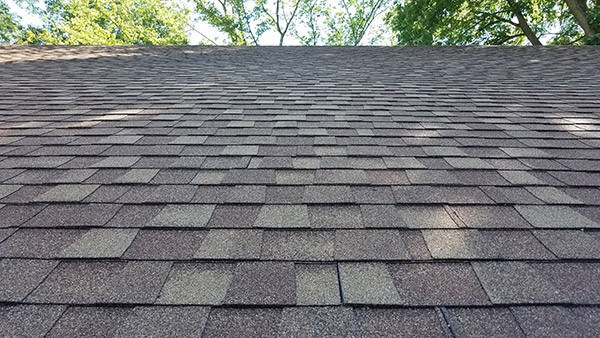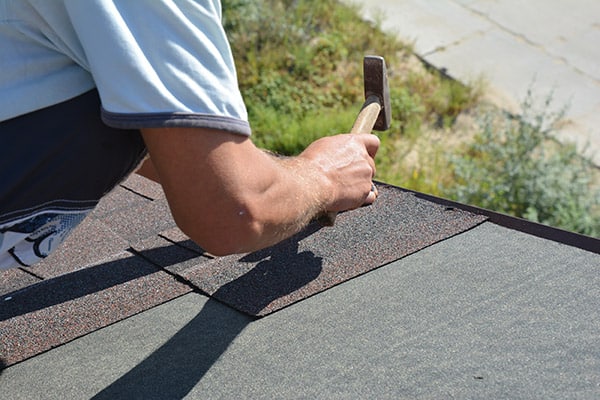Unveiling the Process: How Roof Shingles are Made
Roof shingles are an essential element in residential roofing. Not only do they offer visual appeal, but also act as a protective barrier for homes. Among the various types, asphalt shingles dominate the market. They cover about 80% of homes across the U.S.

Understanding the manufacturing process of roof shingles sheds light on how these critical components contribute to a durable and efficient roofing system. This article aims to explore the intricacies behind the production of roof shingles – from the selection of raw materials, to quality control measures. Roofing contractors should have access to high-quality, durable products for roof shingle replacement, and roofing shingle installation. Emphasizing key aspects such as shingle types, colors, and the warranty associated with them provides homeowners with the knowledge needed for making informed decisions.
Types of Asphalt Roofing Shingles
Asphalt shingles are a popular choice for residential roofing because of their durability, affordability, and variety. They are categorized into several types, each offering unique benefits and aesthetic options.
Variety and Categories of Asphalt Shingles
- Traditional Shingles:
- Also known as 3-tab shingles or strip shingles.
- Made of a single layer of asphalt and fiberglass.
- Features: Cost-effective, easy installation, and repair.
- Lifespan: Up to 20 years.
- Cost: Approximately $4.00 per square foot.
- Warranty: 25-year limited warranty.
- Architectural Shingles:
- Also referred to as dimensional or laminate shingles.
- Composed of two layers bonded together for extra durability.
- Features: Aesthetic appeal with varied sizes and shapes, resembling wood shake or slate.
- Lifespan: 22-25 years.
- Cost: Approximately $5.86 per square foot.
- Warranty: 30-year warranty, prorated after 10 years.
- Luxury Shingles:
- Designed to mimic high-end materials like cedar shakes and slate tiles.
- Features: Superior durability and aesthetic appeal.
- Lifespan: 30 years or more under optimal conditions.
- Cost: Approximately $8.00 per square foot.
- Warranty: 30-year warranty, prorated after 10 years.
- Performance Shingles:
- Engineered for specific benefits like wind resistance, hail resistance, or solar reflectivity.
- Features: Enhanced durability against environmental factors.
Design Options and Aesthetic Variety
Asphalt shingles come in a wide array of colors, textures, and patterns, allowing homeowners to customize the look of their roof to match their home’s exterior. The options include:
- Color Variability: Ranges from natural earth tones to bold, modern colors.
- Textural Choices: Mimics other roofing materials for a more authentic look.
- Pattern Diversity: Offers unique visual layouts and shadow lines.
Special Types and Innovations
- Impact-Resistant Shingles: Modified to withstand impacts from hail or debris, featuring reinforced backing.
- COOL Roofing Shingles: Treated with solar-reflecting granules to reduce heat absorption and increase energy efficiency.
- Specialty Shingles: Offer unique styles and colors, providing options like tile or wood shake appearances without the maintenance requirements of natural materials.
Each type of asphalt shingle serves distinct needs. Homeowners and roofing contractors can choose from these varieties to find the perfect match for their needs!
Advantages of Asphalt Shingles
Asphalt shingles are the preferred choice for residential roofing. They balance affordability with performance while offering a range of benefits from durability to aesthetic flexibility. Let’s dive a bit deeper:
Cost-Effective and Durable
- Affordability: Among the most economical roofing options, asphalt shingles provide significant savings on installation and maintenance. Their ease of installation reduces labor costs, and their durability means fewer replacements over time.
- Durability: With a lifespan of about 20 years and special features like impact resistance and high wind tolerance, asphalt shingles are built to withstand diverse weather conditions. Innovations have led to shingles that can resist severe weather impacts and hail.
Aesthetic Flexibility and Functional Benefits
- Variety of Styles and Colors: Asphalt shingles come in a wide variety of colors and styles, allowing homeowners to choose options that best suit their home’s architectural style and personal preference. Whether it’s the traditional look, or something more modern, there is an asphalt shingle to meet every aesthetic need.
- Energy Efficiency: Modern asphalt shingles are designed to reflect solar heat, reducing cooling costs and improving indoor comfort. This energy efficiency is complemented by the shingles’ ability to provide sound insulation, making them the quieter option compared to metal roofs.
Additional Functional Advantages
- Fire and Algae Resistance: Many asphalt shingles come with a Class A fire rating, the highest available, offering excellent protection against external fire hazards. Additionally, algae-resistant shingles prevent unsightly streaks and maintain the roof’s aesthetic value.
- Ease of Repair and Maintenance: Asphalt shingles are not only easy to install but also simple to repair. Individual shingles can be replaced if damaged, which reduces repair costs and complexity.

Raw Materials and Their Purposes
The production of asphalt roofing shingles incorporates a variety of raw materials, each serving specific functions to enhance the durability, functionality, and aesthetic appeal of the shingles. Understanding these materials is crucial for both manufacturers and consumers to appreciate the quality and engineering behind residential roofing solutions.
Fiberglass and Asphalt: The Core Components
- Fiberglass: Serving as the backbone of the shingle, fiberglass mats provide strength and resistance against tearing. These mats are crafted from glass fibers of precise lengths and diameters, bound together with durable resins and binders. The use of fiberglass instead of traditional organic materials like paper or wood enhances the shingle’s fire resistance and life-span.
- Asphalt: This is applied over the fiberglass mat to create a waterproof barrier. The asphalt used in shingles is a refined byproduct of oil processing, treated to achieve a higher degree of toughness and weather resistance. It plays a pivotal role in adhering the granules to the shingle and protecting the roof from water intrusion.
Granules, Sealant, and Backsurfacing: Protective and Aesthetic Layers
- Granules: Typically made from crushed rock, these are applied to the outer surface of the shingle. Granules protect the underlying asphalt from UV rays, which can degrade the material over time. They also contribute to the shingle’s fire resistance and come in various colors. They are treated with ceramic firing to ensure long-lasting vibrancy and reflectivity.
- Sealant: A thermally-activated asphalt sealant is applied to help bond shingles together once installed. This sealant is crucial for maintaining the integrity of the roofing system, especially during adverse weather conditions.
- Backsurfacing: Comprising fine mineral powders like limestone or sand, backsurfacing is applied to the underside of shingles. It prevents the shingles from sticking to each other and to manufacturing equipment.
Additional Materials for Enhanced Performance
- Copper: Often added to the granules, copper plays a significant role in preventing the growth of algae on shingles, which can cause unsightly streaks and diminish the roof’s aesthetic appeal.
- Silica Sand: Used for its durability and resistance to extreme weather conditions, silica sand reinforces the asphalt shingles, ensuring they remain robust over years of exposure to environmental elements.
Manufacturing Process
The manufacturing process of roof shingles is a detailed and precise operation that transforms basic raw materials into durable roofing products. This process begins with the preparation of the core materials and moves through several stages before the final product is ready for shipping.
Step-by-Step Breakdown of the Manufacturing Process
- Preparation of Core Materials: The process starts with a fiberglass mat, the base of the shingle, which is unwound from rolls. This mat is then fed through a coater where a filled coating of hot asphalt mixed with fine limestone powder (preheated to about 400°F) is uniformly applied. This coating provides the initial waterproofing and adhesive layers essential for the subsequent steps.
- Application of Granules: Once the base coating is applied, ceramic-coated granules are distributed over the top. These granules are derived from specially sourced hard rocks. They are crushed to size, and treated to resist algae growth and discoloration. The granules not only add color and texture, but also protect the shingle from UV rays and fire. A real-time web gauging system monitors the thickness and uniformity of the granule distribution to ensure quality consistency.
- Cutting and Packaging: After the granules are embedded, the continuous sheet of coated fiberglass is cut into a 68-inch wide ribbon. This ribbon is then precisely sliced into individual shingles, with a design that ensures there is no material waste. The cut shingles are subsequently stacked, bundled, and packaged. Special attention is given to the weight, size, and color consistency of the final products to meet stringent quality standards. These bundles are then palletized and wrapped for distribution, ready to be transported to various roofing contractors and suppliers.
This methodical approach ensures that each batch of asphalt shingles meets the high standards expected by homeowners and roofing professionals, contributing to a reliable and efficient roofing system.
Quality Control Measures
Quality control for manufacturing of roof shingles is top-priority. They ensure that each product not only meets, but exceeds the rigorous standards expected by both manufacturers and consumers. Enforcing stringent Standard Operating Procedures (SOPs) across all facilities is a practice all manufacturers should abide by. These SOPs are designed to maintain the highest levels of product integrity and performance.
Testing and Certification
- Wind Resistance Testing: Shingles are rigorously tested for their ability to withstand high winds. This is performed by securing them to a board and placing them in a wind tunnel where fans generate wind speeds of up to 70 miles per hour.
- Fire Resistance Testing: The fire resistance of shingles is tested by setting a sample on a table and igniting it with a Bunsen burner. The test measures how quickly the fire spreads across the slope of the material.
- Durability Testing: To assess durability, shingles undergo tests involving exposure to intense heat and sunlight, along with repeated flexing to simulate wear and tear over time.
Standards and Guidelines
- Certifications: Shingles must meet certifications from recognized organizations, ensuring they adhere to safety and quality standards.
- Shingle Rating Systems: These systems provide vital information on a shingle’s wind and fire resistance, and overall durability. This aids consumers and roofing contractors in making informed choices.
- Quality Control Guidelines: QC Guidelines are developed in conjunction with the National Roofing Contractors Association (NRCA). These guidelines offer visual examination criteria for the application of steep-slope asphalt roofing systems, ensuring consistent quality and performance.
By adhering to these testing and evaluation protocols, manufacturers guarantee that their shingles provide reliable, long-lasting protection, while accommodating a range of climatic conditions and consumer needs.
Installation Techniques and Considerations
Safety and Preparation
- Professional Installation: Work with qualified professionals for the installation of asphalt roof shingles to ensure safety and adherence to building codes. We emphasize the importance of professional installation to prevent common installation errors and potential future complications.
- Preparing the Roof Deck: Before the installation of shingles, the roof deck must be inspected to ensure it is smooth, dry, and free from any gaps or holes. This preparation helps in achieving a flat finish for optimal performance.

Installation Process
- Underlayment and Ice Protection: Install the underlayment in horizontal courses, making sure it overlaps the ice and water protector by 4 inches at the eaves, and 6 inches at the valley membrane flashing. In cold climates, an ice protection membrane is essential and should be installed at the eaves as per building codes.
- Shingle Layout: Begin the installation of field shingles from the bottom of the roof, working upwards. Start with a course of starter shingles to ensure proper alignment and sealing. Overlap and arrange the shingles properly to utilize gravity for effective water shedding.
- Special Attention to Valleys and Ridges: Use open metal valleys for better longevity and performance in shedding water. Ridge cap shingles should be carefully installed to straddle the ridge, sealing nail heads with asphalt roof cement to prevent water ingress.
Considerations for Specific Conditions
- Handling in Cold Weather: Shingles can become brittle and more prone to cracking in cold weather. Handle them with care, especially when lifting or bending is required during installation. Consider using open metal valleys instead of woven or closed cut valleys to avoid bending the shingles.
- Ventilation and Insulation: Ensure that the attic space is properly ventilated to prevent heat and moisture build up. They can adversely affect the roof’s integrity and lifespan. In regions prone to ice damming, install polymer-modified, self-adhering underlayment for additional protection.
- Contractor Selection: Choose a roofing contractor who not only has the necessary credentials and insurance, but also a solid reputation in the community. They should offer a comprehensive warranty that covers all work and materials.
Conclusion
Through a tour of the manufacturing, types, and installation techniques of roof shingles, this article has shed light on the aspects that homeowners must consider when selecting roofing materials. From the selection of raw materials, to the detailed quality control measures that ensure each product’s reliability and performance. Understanding these facets assists in making informed decisions that contribute significantly to the life and efficiency of residential roofing systems.
Choosing asphalt shingles underscores the importance of careful selection and professional installation to safeguard a home’s structural integrity and visual appeal. It’s essential to work with professionals who can provide tailored solutions to meet your specific roofing needs. To get started on your roofing project get a free quote online and speak to a customer delight representative today.





